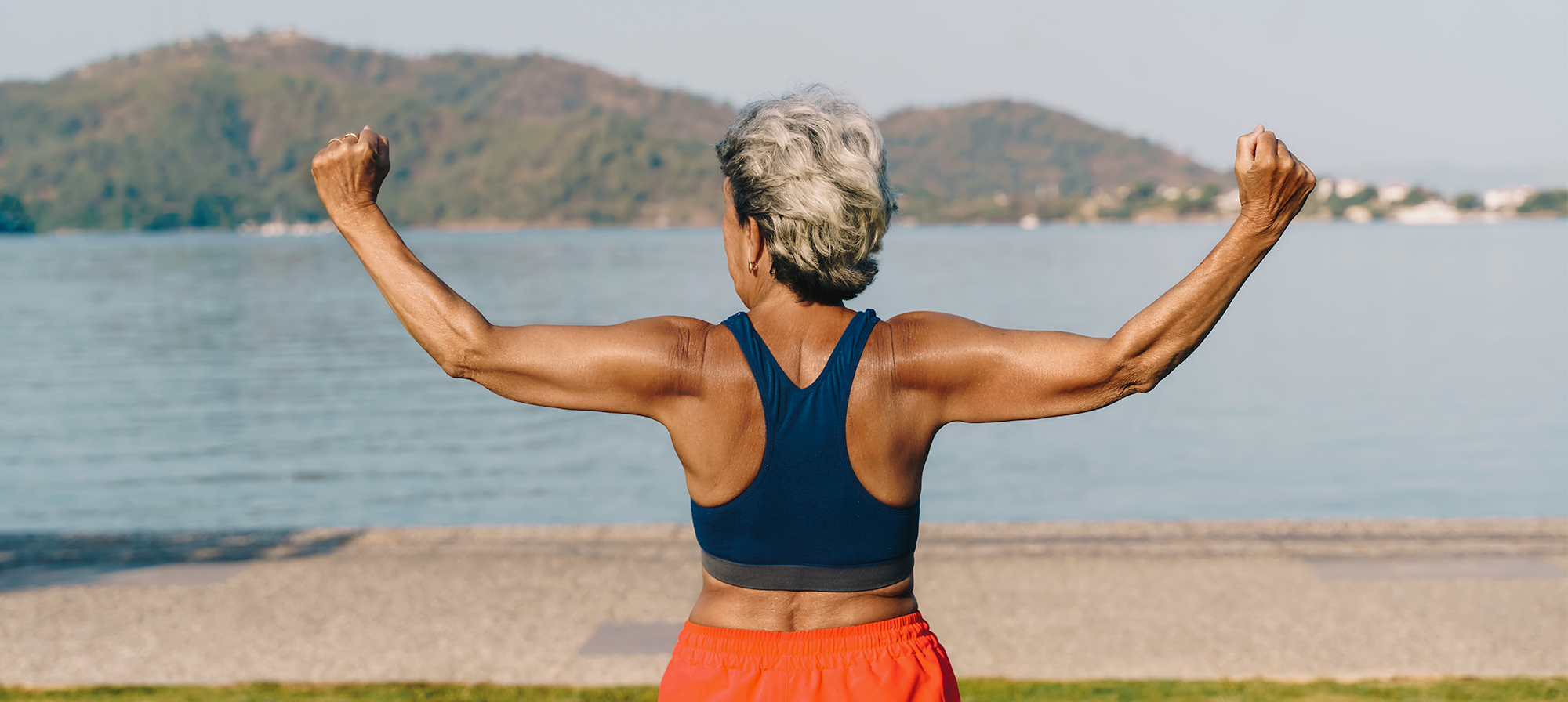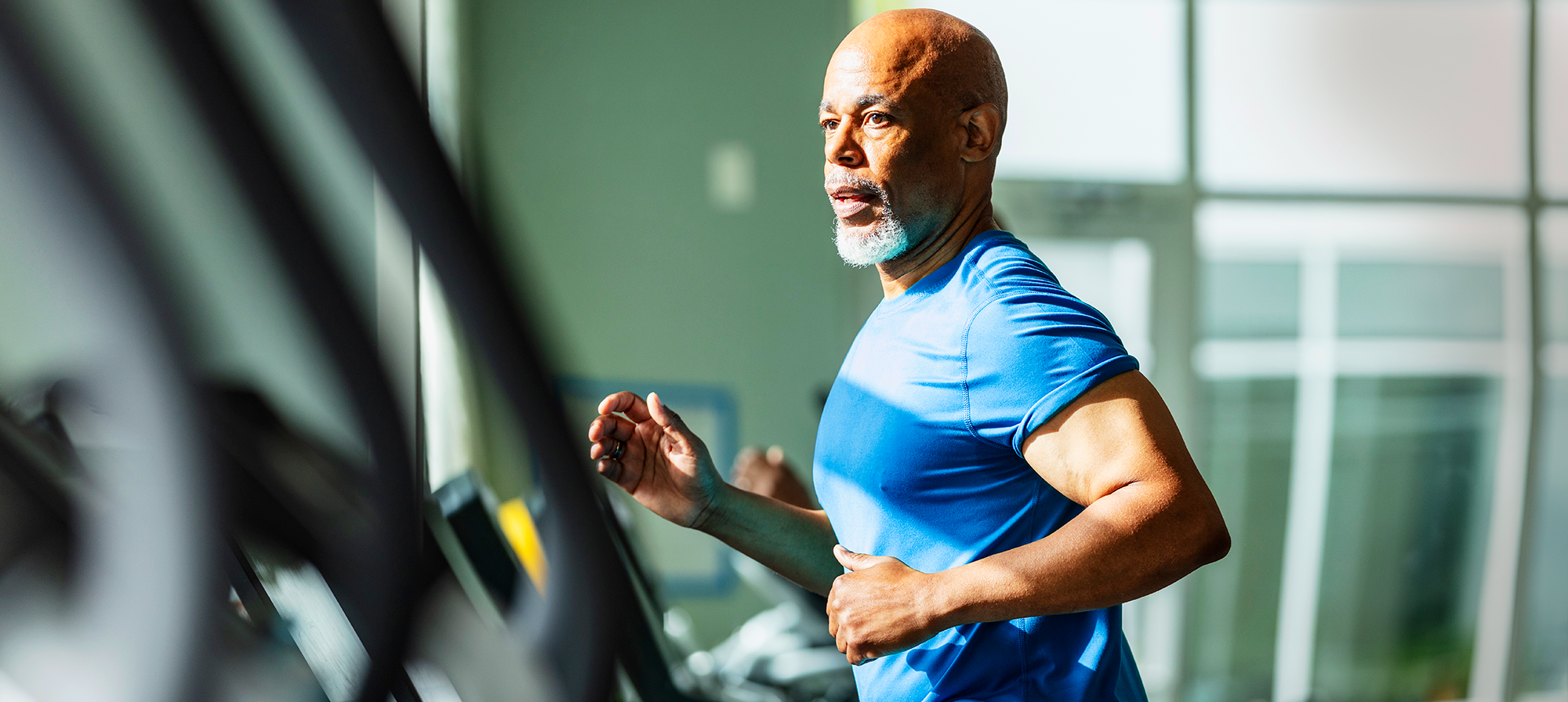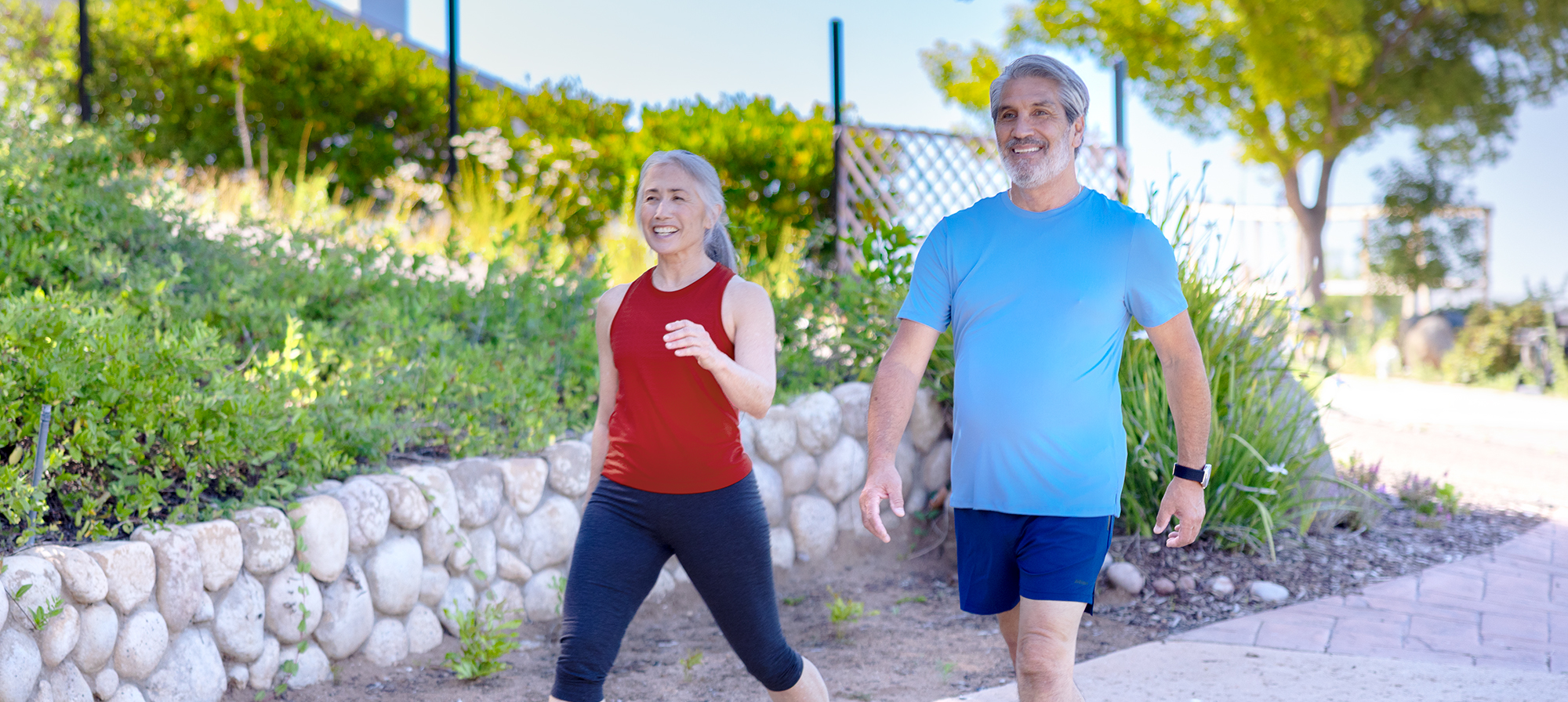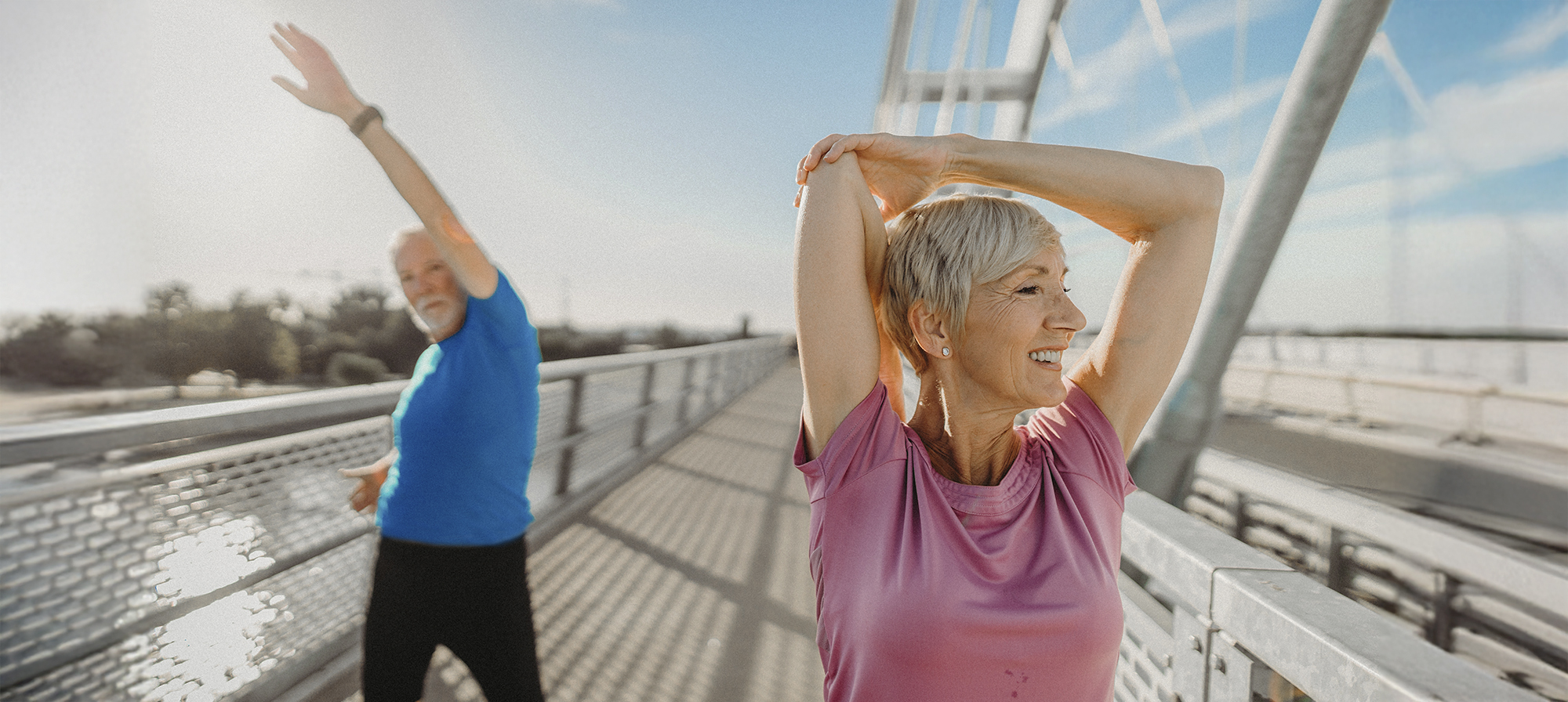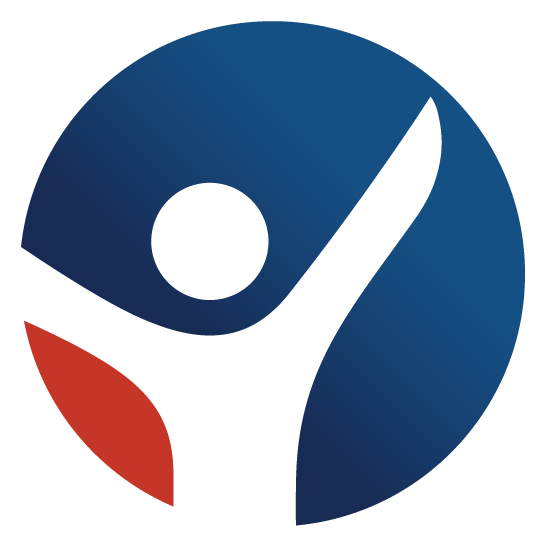Stay healthy and independent as you age! Learn how cardio, strength, balance, and flexibility training can help you live longer and better.
As you age, keeping up with your health is more crucial than ever. The steps you take—both literally and figuratively—can impact your longevity and overall well-being.
The concept of longevity is about more than just living longer; it’s about living better. Focus on boosting both your lifespan—the number of years you live—and your health span —the number of those years spent in good health.
To truly reap the benefits of longevity, adding exercise to your routine is vital. Specifically, you should include 4 types of exercise in your fitness plan: cardio, strength, flexibility, and balance. These forms of movement help slow the effects of aging and enhance your quality of life.

How age and exercise affect your cells
The cells in your body change with age . They grow larger and are less able to divide and multiply. Many cells stop functioning or begin to function abnormally.
One way this happens is through genomic instability. This is when the DNA in your cells changes or gets damaged over time. This damage can happen because of things like exposure to harmful chemicals, radiation, or even just the natural aging process. When your DNA gets damaged, it can lead to problems like cancer and other diseases.
Exercise helps reduce genomic instability by keeping your DNA healthier. When you exercise, your body gets better at repairing damaged DNA. It also gets better at preventing further damage. This means that routine exercise can help protect your cells and keep them healthy.
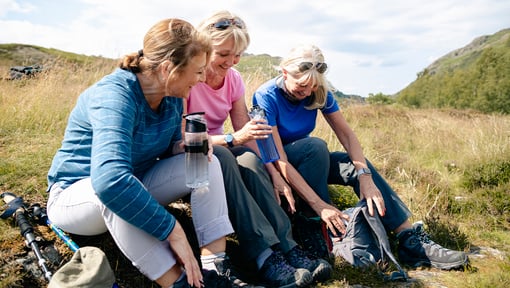
How exercise can help treat disease
Research shows that almost 95 percent of adults aged 60+ have at least one chronic condition. Nearly 80 percent have 2 or more. Exercise helps treat these chronic diseases in several ways:
Cardiovascular disease: Exercise boosts heart health by lowering blood pressure and improving circulation. This helps reduce the risk of heart attacks and strokes.
Diabetes: Exercise lowers blood sugar by using glucose for energy. This, in turn, keeps blood sugar levels stable.
Cancer: Exercise can help reduce the risk of certain types of cancer, such as breast, colon, and prostate cancer. It can also boost the quality of life for cancer patients. It reduces fatigue and improves mood and bodily functions.
Obesity: Exercise burns calories and boosts metabolism. This can help you keep a healthy weight. It also helps maintain muscle mass, which declines with age, and lowers your risk of obesity-related health issues. These include heart disease, diabetes, and certain cancers.
Osteoporosis: This condition causes your bones to weaken. One way to treat it is with weight-bearing exercise, which helps bone growth and slows bone loss. Some examples are walking and lifting weights.
Arthritis: This condition causes joint pain and stiffness. Exercise can lessen the pain and inflammation and keep joints flexible. Plus, it strengthens the muscles around the affected joints. Low-impact exercise is your best choice. Avoid jogging/running and other high-impact activities to help protect your joints.
Chronic Obstructive Pulmonary Disease (COPD): This is a lung condition that makes it hard to breathe. Exercise helps strengthen the muscles needed for breathing and can improve lung function. It also helps manage weight, which is vital for those with COPD, since having extra weight can make breathing even harder.
Before beginning any exercise program, talk with your doctor or physical therapist. They can advise you on how long and hard you should exercise. They may also provide safety tips and/or exercises that might be right for you if you have any health conditions.
Exercise and longevity
When you train to boost your cardio, strength, balance, and flexibility, you’re also helping to boost your lifespan and health span. Regular training can ease daily tasks, lower the risk of falls, and enable a longer, more independent life. Even if you have health problems, being more active can help. Here's how each type of exercise contributes to longevity:

Cardio
Cardio exercise improves your heart health and endurance. It aids in weight control, too.
Aim for at least 150 minutes of moderate-intensity cardio or 75 minutes of high-intensity cardio each week. Spread out your workouts over the week.
Some cardio exercises to include in your workout:
- Brisk walking: Start with a 10-minute warm-up walk. Increase your pace for 20 minutes. Cool down with a 5-minute slow walk.
- Cycling: Ride your bike for 30 minutes. You can adjust the intensity to match your fitness level. Wear a helmet for safety.
- Swimming: Swim laps for 30 to 45 minutes. Try different strokes to work various muscle groups.

Strength
Strength training builds muscle strength. It increases bone density and keeps joints stable. It also improves metabolic rate, which can aid in weight management.
Aim for 2 to 3 sessions per week, targeting all major muscle groups. Do (at least) one set of each exercise, but make sure to work up to 2 to 3 sets per exercise. Do 8 to 12 repetitions per set. Use enough weight or resistance to keep good form and feel challenged the last 2 reps of each set.
Some strength exercises to include in your workout:
- Free weights: Try barbell squats, bench presses, and biceps curls. Start with lighter weights and gradually go up as you build strength.
- Bodyweight exercises: Add lunges and modified push-ups to your routine.
- Weight machines: Use machines at the gym to target specific muscle groups. Read the instructions on each machine to ensure correct form and avoid injury.

Balance
Balance exercise boosts stability. This lowers the risk of injuries from falls. It also strengthens the core muscles, leading to better posture.
For older adults at risk of falling, aim to do balance training 3 or more days per week. You can even do it every day.
Some balance exercises to include in your workout:
- Standing on one leg: Hold on to a chair for support if needed. Lift one leg and hold the position for as long as you can. Repeat on the other leg. As your balance improves, you can hold for longer. To track your progress, write down how long you can stand on each leg.
- Heel-to-toe walks: Walk in a straight line, placing the heel of one foot directly in front of the toes of the other foot. Take 10 steps, slowly turn, and repeat.
- Step-ups with BOSU ball: Use a wall or other stable surface for support if needed, as this is a challenging exercise. Step up onto the dome of the BOSU ball, one foot at a time, and keep feet hip-width apart. Standing on both feet, try to keep your balance for as long as you can. You can make this exercise even more challenging by balancing on one foot. Make sure to do this on both sides. You will notice one side is easier than the other.

Flexibility
Flexibility exercise improves range of motion. And it helps joints move properly. This makes daily activities easier and may help reduce the risk of injury. It helps you feel more relaxed, too.
Aim for flexibility exercises at least 2 to 3 times a week. You can even make them part of your daily routine.
For typical flexibility exercises, hold each stretch for 15 to 30 seconds. But if you hold for 90 to 120 seconds, you may have longer-lasting results.
Some flexibility exercises to include in your workout:
- Stretching routines: Perform stretches for all major muscle groups. Focus on areas like hamstrings, hip flexors, quadriceps, calves, shoulders, and chest.
- Yoga: Join a yoga class or follow online videos to learn poses that improve flexibility and strength. Focus on deep breathing and proper form.
- Tai chi: Try a tai chi class on demand at SilverandFit.com to learn this gentle martial art. Focus on slow, controlled movements and balance.
You don't have to start your fitness routine with all of these types of exercise at once. Simply start with what you can manage. The idea is to move more and sit less. Over time, you can get more active as you feel more ready.
By incorporating cardio, strength, balance, and flexibility training into your week, you can increase your health span and enjoy a longer life. And it's never too late to start! Stay active to stay healthy.
Not a Silver&Fit® member? Learn more about everything the program has to offer, including more helpful healthy living tips like this, here on our website.
This information is not intended to take the place of regular medical care or advice. Please check with your doctor before using this information or beginning any self-care program. Images used for this article do not depict any members of the Silver&Fit program.
References
ADeSimone, G. (2021). Sharable resource: Exercises to improve your balance. ACSM's Health & Fitness Journal, 25(3), 6. https://doi.org/10.1249/FIT.0000000000000659
Harvard Medical School. (2025, January 9). The ideal stretching routine. Harvard Health Publishing. https://www.health.harvard.edu/staying-healthy/the-ideal-stretching-routine
Harvard T.H. Chan School of Public Health. (2022, December). Healthy Longevity. The Nutrition Source. https://nutritionsource.hsph.harvard.edu/healthy-longevity/
Kovar, Elizabeth. (2016, February 3). 7 Basic BOSU balance exercises. American Council on Exercise. https://www.acefitness.org/resources/pros/expert-articles/5819/7-basic-bosu-balance-exercises/
López-Bueno, R., Ahmadi, M., Stamatakis, E., Yang, L., & del Pozo Cruz, B. (2023). Prospective associations of different combinations of aerobic and muscle-strengthening activity with all-cause, cardiovascular, and cancer mortality. JAMA Internal Medicine, 183(9), 982–990. https://doi.org/10.1001/jamainternmed.2023.3093
Lee, D. H., Rezende, L. F. M., Joh, H. K., Keum, N., Ferrari, G., Rey-Lopez, J. P., Rimm, E. B., Tabung, F. K., & Giovannucci, E. L. (2022). Long-term leisure-time physical activity intensity and all-cause and cause-specific mortality: A prospective cohort of US adults. Circulation, 146(7), 523–534. https://doi.org/10.1161/CIRCULATIONAHA.121.058162
Matthews, J. (2015, September 28). Yoga for active older adults: 6 accessible poses to enhance functional capacity. American Council on Exercise. https://www.acefitness.org/resources/pros/expert-articles/5669/yoga-for-active-older-adults-6-accessible-poses-to-enhance-functional-capacity/
Mayo Clinic. (2023, January 14). Exercise and chronic disease: Get the facts. https://www.mayoclinic.org/healthy-lifestyle/fitness/in-depth/exercise-and-chronic-disease/art-20046049
MedlinePlus. (2023, April 18). Aging changes in organs, tissue and cells. National Library of Medicine. https://medlineplus.gov/ency/article/004012.htm
Miller, K.R., McClave, S.A., Jampolis, M.B., Hurt, R. T., Krueger, K, Landes, S., & Collier, B. (2016). The health benefits of exercise and physical activity. Current Nutrition Reports, 5, 204–212. https://doi.org/10.1007/s13668-016-0175-5
National Council on Aging. (2024, May 30). The top 10 most common chronic conditions in older adults. https://www.ncoa.org/article/the-top-10-most-common-chronic-conditions-in-older-adults/
National Institute on Aging. (2025, January 14). Exercising with chronic conditions. https://www.nia.nih.gov/health/exercise-and-physical-activity/exercising-chronic-conditions
National Institute on Aging. (2025, January 14). Health benefits of exercise and physical activity. https://www.nia.nih.gov/health/exercise-and-physical-activity/health-benefits-exercise-and-physical-activity
Pedersen, B. K. (2019). Which type of exercise keeps you young? Current Opinion in Clinical Nutrition and Metabolic Care, 22(2), 167–173. https://doi.org/10.1097/MCO.0000000000000546
Reimers, C. D., Knapp, G., & Reimers, A. K. (2012). Does physical activity increase life expectancy? A review of the literature. Journal of Aging Research, 2012, 243958. https://doi.org/10.1155/2012/243958
U.S. Centers for Disease Control and Prevention. (2023, December 20). Adult activity: An overview. https://www.cdc.gov/physical-activity-basics/guidelines/adults.html
Williamson, L. (2025, January 14). What is healthspan, and how can you maximize yours? American Heart Association. https://www.heart.org/en/news/2025/01/14/what-is-healthspan-and-how-can-you-maximize-yours
This article was written by Stephanie Ruiz, edited by Keleigh Somes, and clinically reviewed by Jaynie Bjornaraa, PhD, MPH, PT, SCS, ATC, CSCS, on April 2, 2025.
